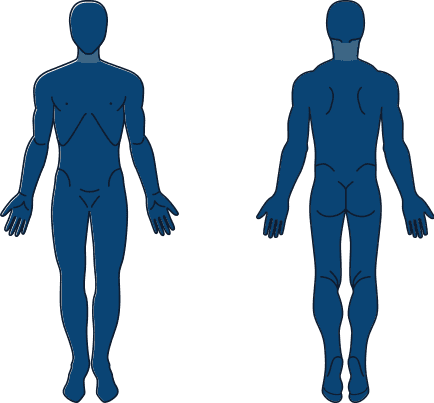What is anabdominal muscle strain?
- An abdominal muscle strain is an overstretching or small tear of any of the muscles of the abdominal wall.
What are some of the typical causes of anabdominal muscle strain?
- Abdominal muscle strains are typically caused by any forceful movement that over-stresses the abdominal wall muscles. This can include forceful coughing or sneezing.
What are the symptoms of an abdominal muscle strain?
- The most common symptom is pain over the abdominal wall in the area of the strain. If the injury to the muscle is severe enough, there may be a bulge seen in the abdominal wall due to the development of a hernia.
What are some initial treatments?
- Rest, ice, anti-inflammatories, compression wrap.
What is a clavicle fracture?
- A clavicle fracture is a break in the bone that connects the breastbone of the chest to the scapula of the back.
What are some of the typical causes of a clavicle fracture?
- Clavicle fractures are caused by landing on an outstretched arm, falling on the shoulder, or direct impacts to the bone.
What are the symptoms of a clavicle fracture?
- Pain over the fracture site, inability to raise the arm, weakness in the arm.
What are some initial treatments?
- Imobilization, rest, ice. This condition should be evaluated by a healthcare professional.
What is a rib injury?
- There are several injuries that can affect the ribs. They can be fractured, bruised, or separated from the cartilage that connects them to the breast bone.
What are some of the typical causes of rib injuries?
- The ribs are typically injured by direct impacts either through contact sports or accidents. The cartilage and ligaments attached to the ribs can also be injured by forceful movements and even sneezing/coughing.
What are the symptoms of a rib injury?
- Pain and or swelling at the site of injury. Pain with coughing, sneezing or laughing.
What are some initial treatments?
- Rest, ice, anti-inflammatories.
What is thoracic outlet syndrome?
- Thoracic outlet syndrome is a condition in which the nerves, arteries, or veins that travel into the arm are compressed after they leave the neck and pass between the chest wall and the clavicle.
- The most common form of thoracic outlet syndrome is neurogenic or compression of the nerves that feed into the arm.
What are some of the typical causes of thoracic outlet syndrome?
- Compression on the nerves, arteries, or veins can be caused by an extra rib near the neck, or muscles in the neck and shoulder region, or extended periods in poor shoulder posture. Many times a specific cause is not identified.
What are the symptoms of thoracic outlet syndrome?
- Shoulder pain, weakness in the arms and hands.
- Numbness and tingling in the shoulders, arms, and hands.
- Cold or discolored hands with poor circulation.
What are some initial treatments?
- Physical therapy, stretches, rest, posture improvement are all potential first steps in treatment.
